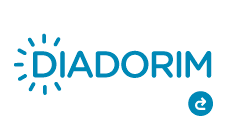ACTIGRAPHY AS A TOOL TO EVALUATE THE SLEEP RHYTHM VIGILIA DURING THE COVID-19 PANDEMIC
Abstract
Actimetry has been shown to be useful for non-parametric analysis of biological activity/rest rhythms. We verified the pattern of activity and rest of 5 women from the city of Maringá/Pr during 30 days. We applied a sociocultural questionnaire (CONEP: 4,032,221). A (31), B (46), C (54), D (55), E (61) years. Total sleep time for A was between 6:00 am and 2:02 pm, with an average of 11 awakenings. For B, 5:10 am and 9:14 am, with an average of 21 awakenings. Participant C, 5:23 am and 10:16 am, with an average of 10 awakenings. For D, 6:02 am and 11:38 am, with an average of 16 awakenings. Participant E, 5:16 am and 8:14 am, with an average of 10 awakenings. All of them presented circadian rhythm and irregularities in sleeping and waking up during the week, with an increase in the number of hours slept on the weekends. They reported worsening sleep quality during the pandemic. When asked about the state of anxiety in relation to the moment, on a scale from zero to ten, participants A, B, C and D answered 9 and E answered 8. In relation to fear of possible health and financial risks, A, C and D scored 8, B and E scored 6 for health. A, B and C scored 9, E scored 6 and D scored 8 for the financier. We can infer that sleep suffers environmental/social influences. Actions that lead to self-knowledge can contribute to the recognition of sleep changes, allowing control and monitoring of real situations of external conflict.
Downloads
References
LEONE, M. J.; SIGMAN, M.; GOLOMBEK, D. A. Effects of lockdown on human sleep and chronotype during the COVID-19 pandemic. Current Biology, v. 30, n. 16, p. R930–R931, 2020. Elsevier Inc. Disponível em: https://doi.org/10.1016/j.cub.2020.07.015 . Acesso em: 08 jun. 2021.
CIOTTI, M.; CICCOZZI, M.; TERRINONI, A.; et al. The COVID-19 pandemic. Critical Reviews in Clinical Laboratory Sciences, v. 57, n. 6, p. 365–388, 2020. Disponível em: https://doi.org/10.1080/10408363.2020.1783198. Acesso em: 07 jun. 2021.
SOUZA, C. D. F. DE; PAIVA, J. P. S. DE; LEAL, T. C.; SILVA, L. F. DA; SANTOS, L. G. Evolução espaçotemporal da letalidade por COVID-19 no Brasil , 2020. Jornal Brasileiro de Pneumologia, v. 46, n. 4, p. 1–3, 2020. Disponível em: https://doi.org/10.36416/1806-3756/e20200208. Acesso em: 07 jun. 2021.
BEZERRA, Anselmo César Vasconcelos et al. Fatores associados ao comportamento da população durante o isolamento social na pandemia de COVID-19. Ciência & Saúde Coletiva, v. 25, p. 2411-2421, 2020. Disponível em: https://doi.org/10.1590/1413-81232020256.1.10792020. Acesso em: 11 jun. 2021.
XIE, Xinyan et al. Mental health status among children in home confinement during the coronavirus disease 2019 outbreak in Hubei Province, China. JAMA pediatrics, 2020. Disponível em: https://doi.org/10.1001/jamapediatrics.2020.1619. Acesso em: 11 jun. 2021.
RIBEIRO, Cairon Rodrigo Faria; SILVA, Yasmin Maria Garcia Prata da; OLIVEIRA, Sandra Márcia Carvalho de. O impacto da qualidade do sono na formação médica. Revista Brasileira de Educação Médica. Rio Branco, p. 8-14. jan. 2014. Disponível em: https://www.sbcm.org.br/ojs3/index.php/rsbcm/article/view/45. Acesso em: 18 jun. 2021.
TUFIK, Sergio. Medicina e Biologia do Sono. Barueri: Manole, 2008. P. 483.
MELLO, BJ; MELLO, ST; VIDOTTI, AP; MELLO, JM. Cronotipo e qualidade do sono de acadêmicos do primeiro ano do curso de medicina da cidade de Maringá-PR. Revista Saúde e Pesquisa. V. 11 (2), p.287-292, 2018. Disponível em: http://dx.doi.org/10.177651/1983-1870.2018v11n2p287-292. Acesso em: 18 jun. 2021.
KHATONY, Alireza et al. International nursing: a study of sleep quality among nurses and its correlation with cognitive factors. Nursing administration quarterly, v. 44, n. 1, p. E1-E10, 2020. Disponível em: https://doi.org/10.1097/naq.0000000000000397. Acesso em: 23 jun. 2021.
CELLINI, Nicola et al. Changes in sleep pattern, sense of time and digital media use during COVID‐19 lockdown in Italy. Journal of Sleep Research, p. e13074, 2020. Disponível em: https://psycnet.apa.org/doi/10.1111/jsr.13074. Acesso em: 24 jun. 2021.
XIAO, Han et al. Social capital and sleep quality in individuals who self-isolated for 14 days during the coronavirus disease 2019 (COVID-19) outbreak in January 2020 in China. Medical science monitor: international medical journal of experimental and clinical research, v. 26, p. e923921-1, 2020. Disponível em: https://dx.doi.org/10.12659%2FMSM.923921. Acesso em: 24 jun. 2021.
MATHUR; GRAHAM-ENGELAND,; SLAVISH; SMYTH; LIPTON; KATZ; SLIWINSKI. Recalled early life adversity and pain: the role of mood, sleep, optimism, and control. Journal of behavioral medicine. 1573-3521. Vol. 41:(4), 2018. Disponível em: https://doi.org/10.1007/s10865-018-9917-8. Acesso em: 24 jun. 2021.
MAJUMDAR, Piya; BISWAS, Ankita; SAHU, Subhashis. COVID-19 pandemic and lockdown: cause of sleep disruption, depression, somatic pain, and increased screen exposure of office workers and students of India. Chronobiology International, v. 37, n. 8, p. 1191-1200, 2020. Disponível em: https://doi.org/10.1080/07420528.2020.1786107. Acesso em: 18 jun. 2021.
CHRISTENSEN, Matthew A. et al. Direct measurements of smartphone screen-time: relationships with demographics and sleep. PloS one, v. 11, n. 11, p. e0165331, 2016. Disponível em: https://doi.org/10.1371/journal.pone.0165331. Acesso em: 18 jun. 2021.
VALLANCE, Jeff K. et al. Associations of overall sedentary time and screen time with sleep vetteoutcomes. American journal of health behavior, v. 39, n. 1, p. 62-67, 2015. Disponível em: https://doi.org/10.5993/AJHB.39.1.7. Acesso em: 24 jun. 2021.
WALIA, Harneet K.; MEHRA, Reena. Practical aspects of actigraphy and approaches in clinical and research domains. In: Handbook of clinical neurology. Elsevier, 2019. p. 371-379. Disponível em: https://doi.org/10.1016/b978-0-444-64032-1.00024-2. Acesso em: 07 jul. 2021.
GONÇALVES, B.SB.; ADAMOWICZ, T.; LOUZADA, F.M.; MORENO, C.R.; ARAUJO, J.F. A fresh look at the use of nonparametric analysis in actmetry. Sleep Medicine Reviews. 20: 84-91, 2015. Disponível em: https://doi.org/10.1016/j.smrv.2014.06.002. Acesso em: 07 jul. 2021.
HEIN, Matthieu et al. Hyperarousal during sleep in untreated primary insomnia sufferers: a polysomnographic study. Psychiatry research, v. 253, p. 71-78, 2017. Disponível em: https://doi.org/10.1016/j.psychres.2017.03.045. Acesso em: 14 jul. 2021.
LOK, Renske et al. Daytime melatonin and light independently affect human alertness and body temperature. Journal of pineal research, v. 67, n. 1, p. e12583, 2019. Disponível em: https://doi.org/10.1111/jpi.12583. Acesso em: 14 jul. 2021.
PEREIRA, Nádia et al. Influence of dietary sources of melatonin on sleep quality: a review. Journal of food science, v. 85, n. 1, p. 5-13, 2020. Disponível em: https://doi.org/10.1111/1750-3841.14952. Acesso em: 14 jul. 2021.
VETTER, Céline et al. Prospective study of chronotype and incident depression among middle-and older-aged women in the Nurses’ Health Study II. Journal of psychiatric research, v. 103, p. 156-160, 2018. Disponível em: https://doi.org/10.1016/j.jpsychires.2018.05.022. Acesso em: 14 jul. 2021.
GUIMARÃES, Leonardo; SCHIRMER, Mayara; COSTA, Zuleika. Implicações da privação do sono na qualidade de vida dos indivíduos. Revista Perspectiva: Ciência e Saúde, v. 3, n. 1, 2018.
BACELAR, A.; PINTO JR., L. R. et al., Insônia: do diagnóstico ao tratamento. São Paulo: Difusão Editora, 2019. Disponível em: Associação Brasileira do Sono.
DECLARAÇÃO DE ORIGINALIDADE E DIREITOS AUTORAIS
Declaro que o presente artigo é original, não tendo sido submetido à publicação em qualquer outro periódico nacional ou internacional, quer seja em parte ou em sua totalidade.
Os direitos autorais pertencem exclusivamente aos autores. Os direitos de licenciamento utilizados pelo periódico é a licença Creative Commons Attribution 4.0 (CC BY ): são permitidos o acompartilhamento (cópia e distribuição do material em qualqer meio ou formato) e adaptação (remix, transformação e criação de material a partir do conteúdo assim licenciado para quaisquer fins, inclusive comerciais.

Recomenda-se a leitura desse link para maiores informações sobre o tema: fornecimento de créditos e referências de forma correta, entre outros detalhes cruciais para uso adequado do material licenciado.

















